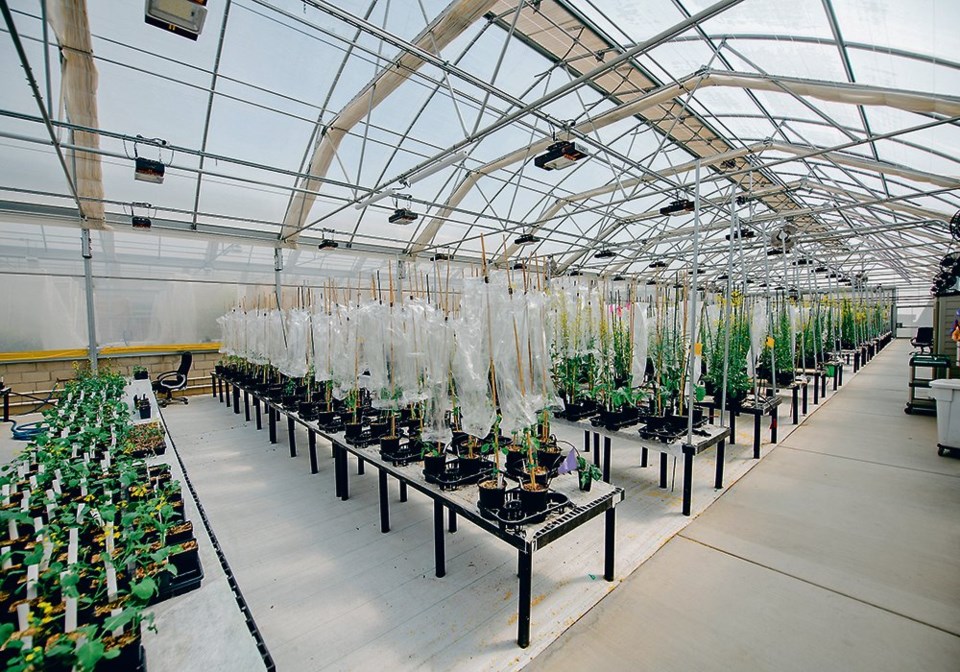WESTERN PRODUCER — Favourable regulations and about 20 million acres of cropland devoted to the crop is making canola in Canada an ideal market entry point for San Diego-based Cibus to introduce new pod-shatter-resistant genetics.
The independent crop trait developer recently received a patent for its pod-shatter reduction trait that strengthens the canola pod sheath. This helps prevent harvest loss particularly in straight-cut canola, which is more susceptible.
“What we saw very quickly is that the market is heading toward direct combine from windrowing,” said Peter Beetham, president and chief operating officer at Cibus.
Losses from pod shattering vary widely depending on harvest conditions but about one or two bushels per acre is considered normal. Producers lose at harvest and the following spring because then they must deal with volunteer canola as a weed.
Cibus’s shatter-resistance trait was developed by editing canola’s existing genes to change the crop’s performance using its rapid trait development system, which can, in effect, cut-and-paste genes.
This approach differs from transgenic crops, which are created by importing genes from other organisms to get the desired trait, such as herbicide tolerance. This is important because agencies such as Health Canada have deemed gene editing functionally the same as conventional plant breeding techniques, needing no extra regulation. Beetham said the United Kingdom is taking a similar stance and he expects the European Union to eventually follow suit.
Cibus tested the shatter-resistance trait with their own canola genetics in successful field trials. From there, they worked with nine seed companies in North America and Europe so they could incorporate the trait into their own varieties.
“So, we’re in the process of moving to hand back materials to partners in the next six to 12 months,” Beetham said. “We’re running trials in the field all the time, so this is not a research project. It’s a commercial launch line we’re on, heading to 2025.”
Beetham said gene editing offers more precision, power and speed than other plant-breeding methods. It’s able to bring a new variety online in about five years, one third of the time compared to a transgenic variety.
On the development side, transgenics also tend to be limited to traits governed by a single gene and they face regulatory hurdles so high only a few of the world’s largest ag corporations can develop them. Mutagenesis, another popular method, faces no special regulatory hurdles but creates random genetic mutations that have to be bred out over several generations of plantings.
Neither of these older methods was suitable for the pod-shatter resistance project.
“The patent describes in a little more detail the complexity of the trait,” Beetham said. “That again is unique to Cibus. We’re able to target multiple genes and in this case, up to eight genes.”
Once the trait was working as desired, it was fairly straightforward to start moving it into other varieties.
Some of Cibus’s field trials are in Canada, notably in eastern Saskatchewan and Manitoba, where Cibus has benefited from direct feedback from farmers working the fields. Canadian staff members are also active in producer groups, industry and bodies such as Seeds Canada.
Beetham said these connections have provided some guidance. For instance, the pod shatter resistance trait is something farmers were calling for as it makes harvesting canola less time-critical. This means, for example, it’s less likely to have to choose between canola shelling or losing quality on harvest-ready wheat in the field.
Cibus works on five main crops: canola, corn, wheat, rice and soybeans. Many of the traits it works on are highly conserved, that is, they rely upon genes that are found across species. This means an advance in one crop can often be adapted for another.
“The really great news is we’ve focused on canola first and there’s 50 million acres of canola we see around the world right now,” Beetham said. “It’s a crop that’s expanding, as you know, there’s a whole lot of new crush plants going into Canada, so the ability to provide a domestic supply is going to improve, and it’s a big export market.”
Since Cibus is independent of the big four global ag chemical companies, Beetham said they are free to pursue, for example, weed control options beyond common chemistries such as glyphosate, glufosinate and the imi-class herbicides. These, over time, become less effective as weeds develop resistance.
“We’d also like to bring some other weed management solutions to the farmer,” he said. “This is the beauty of being able to target genes using our technology and multiple edits, the complexity. You can start to think about bringing forward other chemistries that will provide farmers with better weed management solutions, to use less herbicide for the same outcome.”
Another project is to engineer crops to use fertilizers more efficiently, both to help reduce crop input costs and reduce impact on the environment and climate. This is especially timely as governments consider new regulations on the use of synthetic fertilizers.
“I think the goal is somewhere between improve the nitrogen use by between 30 to 50 percent to the point where in some cases you may go beyond that,” Beecham said. “The reality is there are targets that we know will provide that level of efficiency. It’s not if it’s going to happen, it’s when.”
Cibus is also working on general disease resistance to protect canola from pathogens such as sclerotinia and clubroot.
“One of our true missions is on the productivity side,” Beetham said. “It is allowing farmers to have solutions for everything from managing their weeds, to fertilizer to disease, and then on the agronomy side, with the pod shatter.”

